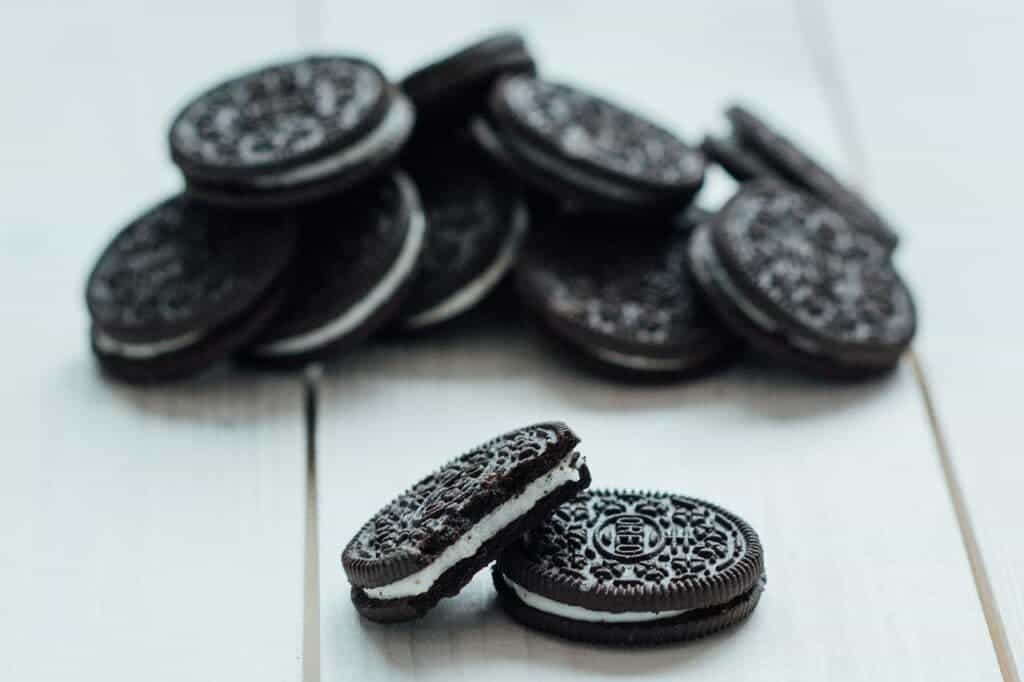We all have our own special way of snacking on Oreos, whether it’s dunking it into milk, eating the whole thing, or twisting the cookie to eat two separate parts. If you prefer this last method, you probably noticed that the inside filling usually sticks to just one side or the other. Now, a study by MIT researchers analyzed why this happens.

Oreo bias
The team applied a standard test in rheology (the study of how material flows when twisted, pressed, or stressed) to Oreo cookies and found the cream at the center always sticks to one wafer when twisted open — no matter the flavor or the amount of the stuffing, the cream seemed to have a bias towards one side. The only difference was that the cream separated more evenly from older boxes of cookies.
But this is just the beginning of the study. The researchers measured the torque necessary to twist open an Oreo, and found it’s similar to the torque needed to turn a doorknob. They also found (important Oreo factoid) that the cream’s failure stress (the force per area needed to get to the cream to flow) is twice that of cream cheese and peanut butter and the same as for mozzarella cheese.
Based on the cream’s response to stress, the team described its texture as “mushy” rather than rubbery, tough or brittle. But it’s unusual for mushy cream to stick to one side rather than split evenly between both, so why does Oreo cream behave differently? The researchers suspect the answer might lie on Oreo’s manufacturing process, at least according to videos of the inside of the factory.
“Videos of the manufacturing process show that they put the first wafer down, then dispense a ball of cream onto that wafer before putting the second wafer on top,” Crystal Owens, an MIT mechanical engineering and lead author, said in a statement. “Apparently that little time delay may make the cream stick better to the first wafer.”
More Oreo science
For their study, the researchers created a 3D-printable “Oreometer” — a device that firmly holds an Oreo cookie and uses rubber bands and pennies to control the twisting force that gradually twits the cookie open. They twisted the cookie apart with the new tech and looked at the crème-to-cookie ratio on each side, using different variables.
The researchers went through 20 boxes of Oreos, experimenting with dunking the cookie in milk and using different flavors and filling amounts, including regular, Double Stuf and Mega Stuf, and golden and dark cookies. The results showed that no matter the flavor or the cream filling, the cream almost every time separated onto one wafer.
“I had in my mind that if you twist the Oreos perfectly, you should split the creme perfectly in the middle. But what actually happens is the creme almost always comes off of one side,” Owens said in a statement. “If you try to twist the Oreos faster, it will actually take more strain and more stress to break them.”
The researchers also mapped each cookie’s result to its original position in the box and found the cream tended to stick to the inward-facing wafer. Cookies on the right separated with cream on the left wafer, while cookies on the left did the opposite. They think heating or jostling may cause the cream to peel away from the outer wafers.
So there you go, next time you open an Oreo, you’ll know the best process to open it, and you’ll know how the inside cream will behave. Because what else besides physics can make an Oreo even more appealing?
The study was published in the journal AIP.
Was this helpful?



